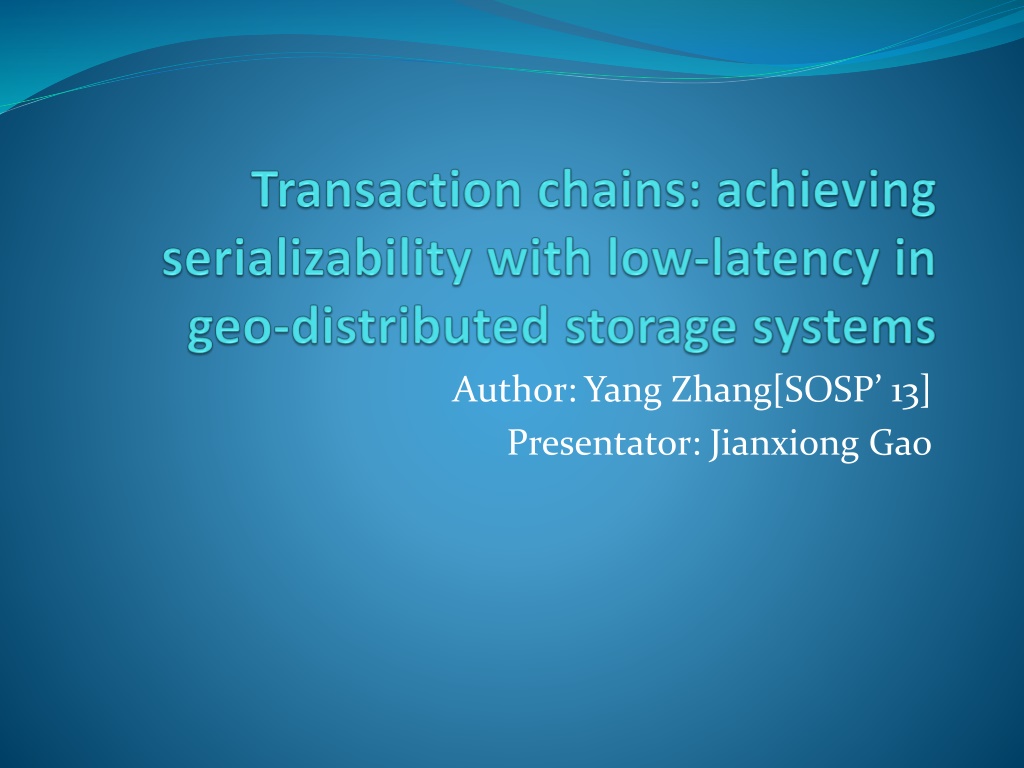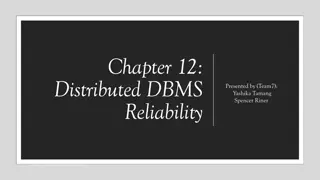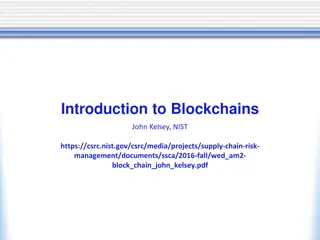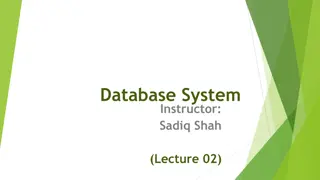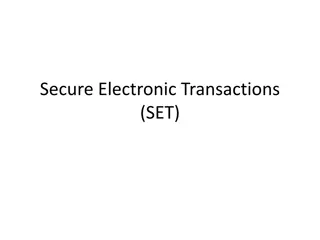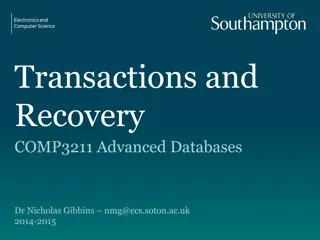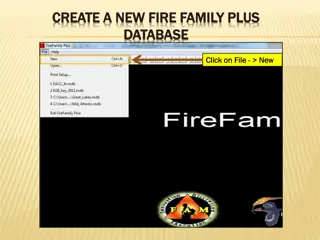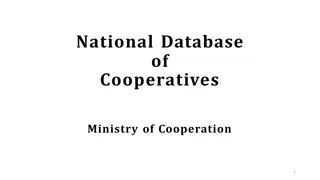Distributed Database Management and Transactions Overview
Explore the world of distributed database management and transactions with a focus on topics such as geo-distributed nature, replication, isolation among transactions, transaction recovery, and low-latency maintenance. Understand concepts like serializability, hops, and sequence number vectors in managing large-scale web applications. Delve into examples of strict serializability and the operations involved in maintaining data consistency across distributed datacenters.
Download Presentation

Please find below an Image/Link to download the presentation.
The content on the website is provided AS IS for your information and personal use only. It may not be sold, licensed, or shared on other websites without obtaining consent from the author. Download presentation by click this link. If you encounter any issues during the download, it is possible that the publisher has removed the file from their server.
E N D
Presentation Transcript
Author: Yang Zhang[SOSP 13] Presentator: Jianxiong Gao
Geo-distributed Nature Large-scale Web applications Geo-distributed storage Replication Shards Derived Tables Secondary Indices Materialized Join Views Geo-Replicas
Transaction in database management Recovery from failure Isolation among transactions
Prior work Strict serializable High latency Spanner [OSDI 12] Serializable Provably high latency according to CAP Lynx[SOSP 13] ? Various non-serializable Walter [SOSP 11] COPS [SOSP 11] Eiger [NSDI 13] Low latency Dynamo [SOSP 07] Eventual General transaction Key/value only Limited forms of transaction
Transaction in database management while maintaining low latency Recovery from failure If the first hop of a chain commits, then all hops eventually commit Users are only allowed to abort a chain in the first hop Log chains durably at the first hop Logs replicated to a nearby datacenter Re-execute stalled chains upon failure recovery Isolation among transactions Home geo-replica Sequence number vectors
Sequence Number Vectors Event A: Go through (P1 P3 P2) Event B: Go through (P1 P2 )
What are hops? Serializability Defination: Serializability of a schedule means equivalence (in the outcome, the database state, data values) to a serial schedule (i.e., sequential with no transaction overlap in time) with the same transactions. Transactions Ordering 1 Ordering 2
Serializable Example Transaction 1: Tbid Transaction 2: Tadd Transaction 3: Tread Time Serializable Strict serializable
What are hops? Operation: Alice bids on Bob s camera 1. Insert bid to Alice s Bids 2. Update highest bid on Bob s Items Alice s Bids Alice Book $100 Bob Bob s Items Alice Bob Camera $100 Datacenter-1 Datacenter-2
What are hops? S-edge: Connecting unchopped transactions C-edge: Connecting vertices write to the same item. Chopping When can we chop?
What are hops? Serializable when no SC-cycles. Shasha[Transactions on Database Systems 95] Solution: Remove C-edges.
System Chains Subchains either commute Or has origin ordering Secondary Index Join View Geo-replication
Experimental setup europe Lynx protoype: In-memory database Local disk logging only. us-east us-west
Results: Response Time Chain completion 300 252 250 Latency (ms) 200 174 150 100 50 3.2 3.1 3.1 0
Result: Throughput 1.6 1.35 1.4 1.2 Million ops/sec 1 0.8 0.6 0.4 0.184 0.173 0.2 0 Follow-User Post-Tweet Read-Timeline
Other thoughts & Coments Can we always chop? Too many derived table? Actual transaction time not reduced. More experiments?
Thanks! Graphs and parts of slides accredit to author of the paper: Yang Zhang.
